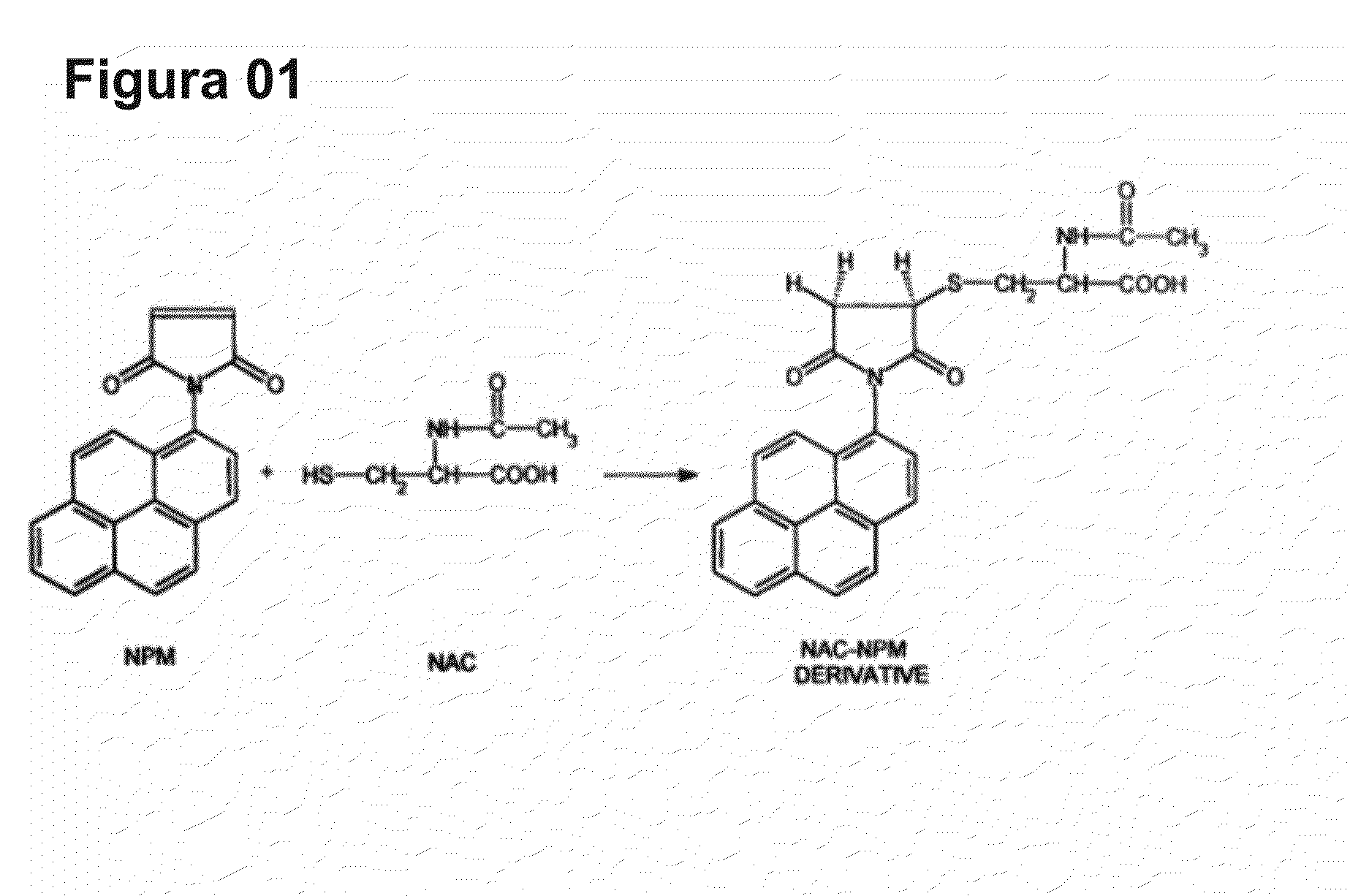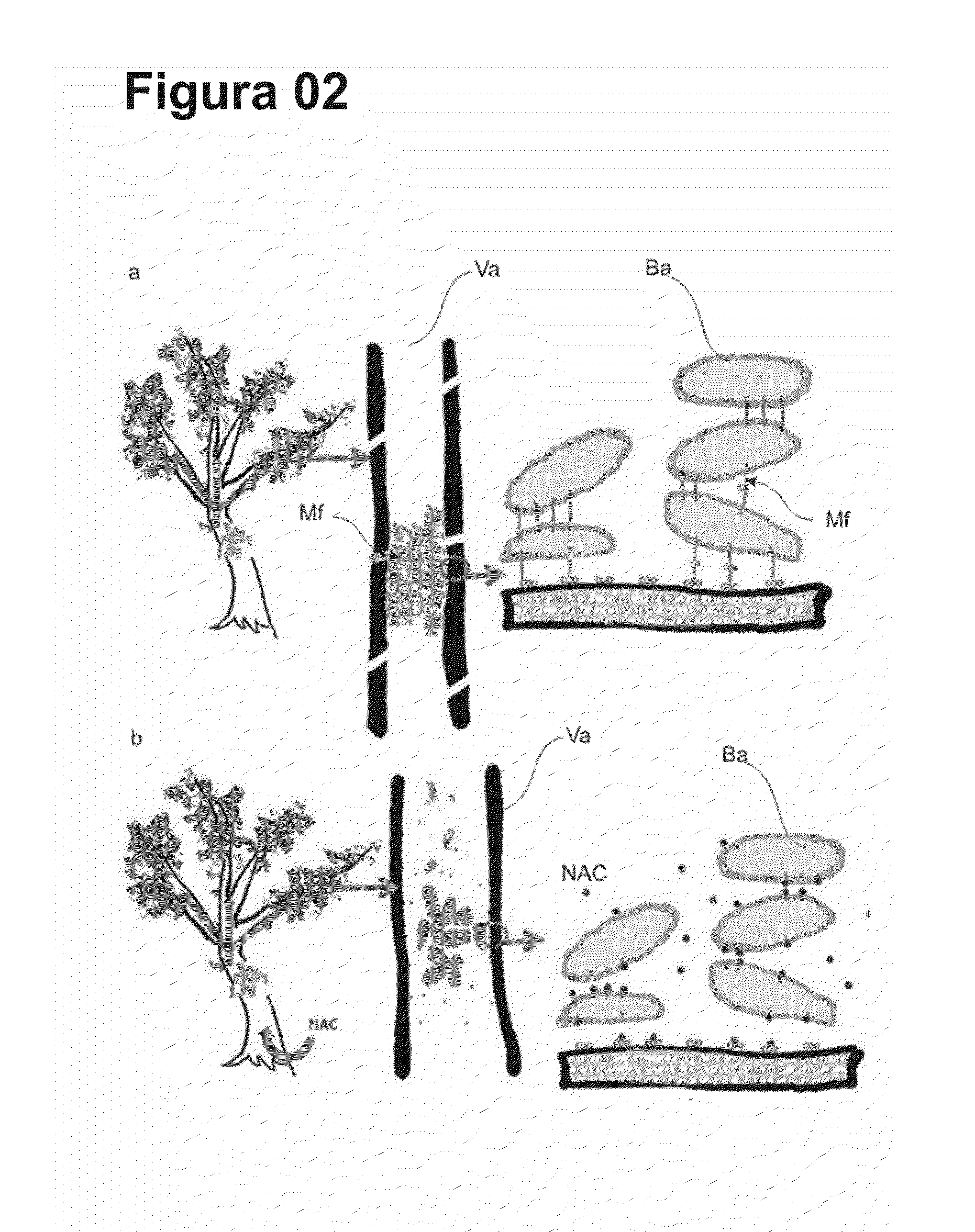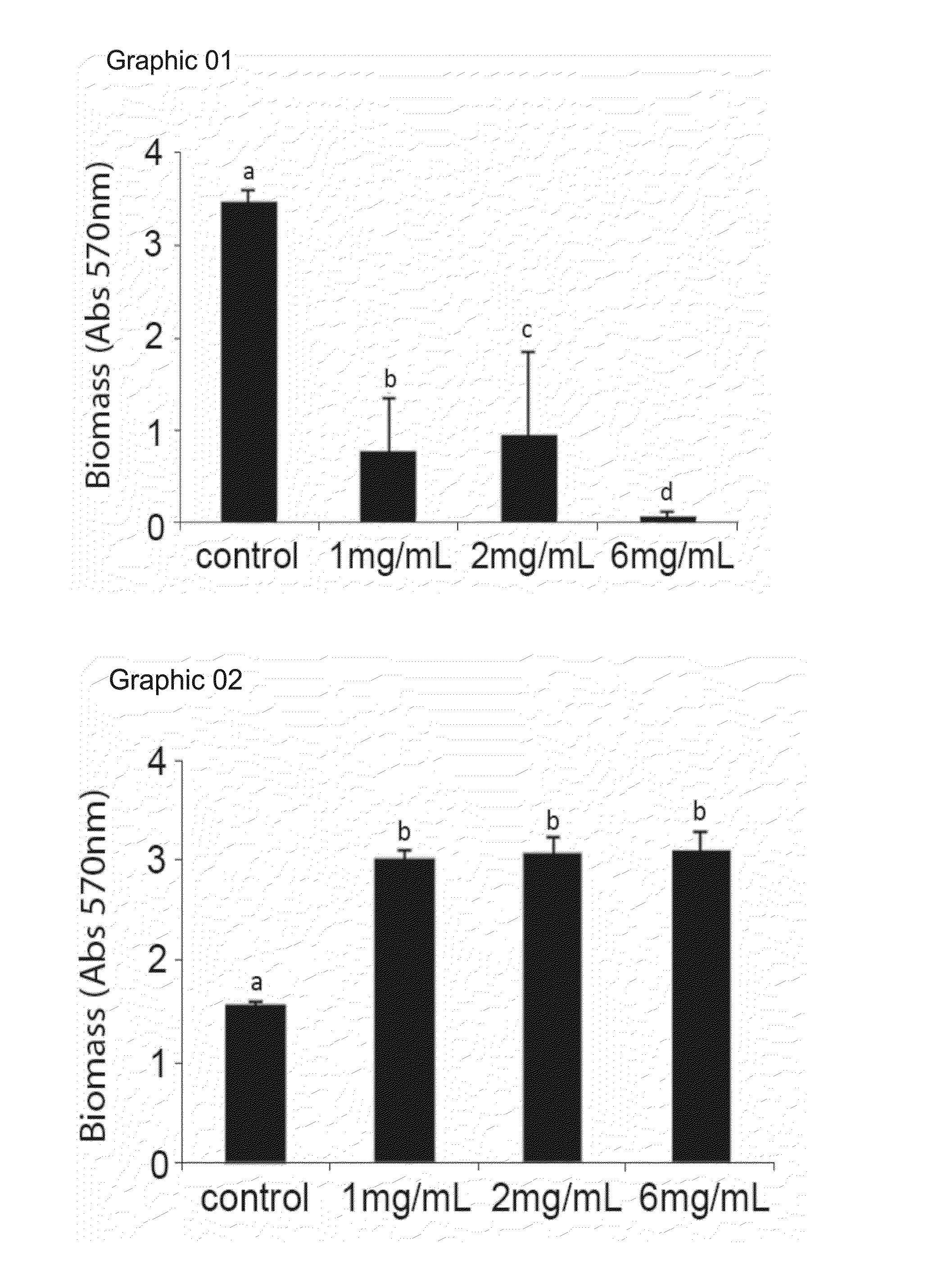Cysteine amino-acid compound (or its analogues) used in the disruption of microbial biofilms when treating or preventing diseases caused by phytopathogenic bacteria known to attack plants of agricultural interest
a technology of cysteine and amino acids, which is applied in the field of cysteine amino acids used in the disruption of microbial biofilms when treating or preventing diseases caused by phytopathogenic bacteria known to attack plants of agricultural interest, can solve the problems of public resistance to the final product generated, high crop cost and limited production scale, and the possibility of contamination of the individual who applies
- Summary
- Abstract
- Description
- Claims
- Application Information
AI Technical Summary
Benefits of technology
Problems solved by technology
Method used
Image
Examples
Embodiment Construction
[0095]The following detailed description must be read and interpreted with reference to the drawings, graphs and tables presented. It represents the preferred forms of the unique compound cysteine amino-acid, used in the disruption of microbial biofilms during the treatment or prevention of disease generated by bacterial pathogens that affect plants of agricultural interest, during which a comprehensive study conducted on laboratory scale, and choosing the analogue of cysteine known as N-acetyl L-cysteine (NAC). It is not intended to limit the scope of the invention, rather limiting merely the claims described in the referred table.
[0096]First tests were performed in vitro to investigate the possible effects of N-acetyl L-cysteine (NAC) on X. fastidiosa biofilms. After obtaining these results, field experiments were performed on orange pear plants with CVC symptoms. For all experiments we used the 9a5c strain, re-isolated in the PW (Davis et al., 1981) of sweet orange pear plants wi...
PUM
| Property | Measurement | Unit |
|---|---|---|
| concentration | aaaaa | aaaaa |
| molecular weight | aaaaa | aaaaa |
| time | aaaaa | aaaaa |
Abstract
Description
Claims
Application Information
 Login to View More
Login to View More - R&D
- Intellectual Property
- Life Sciences
- Materials
- Tech Scout
- Unparalleled Data Quality
- Higher Quality Content
- 60% Fewer Hallucinations
Browse by: Latest US Patents, China's latest patents, Technical Efficacy Thesaurus, Application Domain, Technology Topic, Popular Technical Reports.
© 2025 PatSnap. All rights reserved.Legal|Privacy policy|Modern Slavery Act Transparency Statement|Sitemap|About US| Contact US: help@patsnap.com



